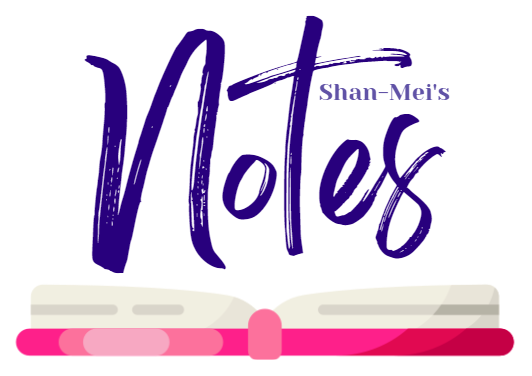


Essay planning
Questions for answering
Account for the differences in the way two texts use generic conventions by considering their contexts.
Generic conventions
Witness for the prosecution
- Mayherne interviews Vole about the events before the death of the victim
- Murderer is introduced near the beginning of the text (Vole)
- Red herrings
- Shade of hesitation in his words page 9
- Romaine’s evidence that Vole came back at 20 past 9 page 11
- Follows an unassuming piece of evidence (the notes and the letter)
- Setting established early in the story
- False lead
- People who can testify for Vole/others leaving/entering buildings
- The letter for Shaws rents
- Denouement
- Clear motive
- “Perfect crime”
- Crime can be solved at the same time as detective (including plot twist, due to the pondering of habits)
- Note
- Follows unconventional style of trying to save someone from the crime rather than solving it
Knives out
- Interviewing all subjects
- Red herrings
- Walt, and being fired from the publishing company
- Ransom, who had an argument with Harlan
- Joni, and the payment mess up
- Explaining all the facts of the story while Blanc asks Marta things for the first time
- Evidence that doesn’t make sense
- Blanc who got hired by a stack of cash and an anonymous letter
- Going back over info events at the time of Harlan’s death
- Falsified evidence
- Everyone lying about possible murder motives
- Marta lying about Harlan’s demeanor
- Blanc follows a set method to solve the crime
- Unusual evidence followed
- Footprints in the garden
- Tear up the trellis wall
- Influence
- “Meg. You think I can pay for your school?” pg 81
- Using manipulation to get Meg on their side, even though Meg believes that Harlan wrote the will that way for a reason
- Car chase - modern detective fiction
- Unexpected denouement
- Sudden arrest - of ransom
Ungeneric conventions
Knives out
- Ransom is a red herring - killing out of hatred
Other Notes
Knives out
- “Protected. Playing life like a game without consequence, till you can’t tell the difference between a stage prop and a real knife. He stabs it into the desk, sharp and real. Leaves it there.”
Contexts
Knives out
- The last jedi being Johnson’s last film before its release
- “Brick” 2005 idea conceived after
- Whodunit mystery
- Influenced by Agatha Christie film adaptation
- Alfred hitchcock plot development tips
- Title came from a radiohead song
- Youtube came out
- Kyoto protocol
- 4 coordinated suicide bombings in london
- Suddam Hussein trials beginning
- Political undertones - 2016 election
- Trump first got elected
- Very severe left v right ideology
- Stereotyping
- Rise of social media
- Instagram = 2010
- Snap = 2011
- Facebook - 2004
- Reddit = 2005
- Jacob, the troll
- Joni, an influencer
- High number of immigrants 2000s
- Marta being an immigrant
- High amount of hostility against
- Marta’s family being illegally immigrated - many people were illegal immigrants then - tripling in size
Agathe Christie
- 1923 Housing act
- More affordable to buy houses
- Less people living in slums
- Post world war 1 unemployment
- Many more people become unemployed
- Women started fighting for freedom in society
- Marie stopes, birth control
- Gained a little bit of rights
- People starting turning to cinema and theatre for entertainment
- Romaine’s significance, and how she could act well where Mayherne didn’t notice until the end
- Lack of generic convention
- Falsified evidence
- “The roaring 20s”
- Rise of Jazz
Writing titles
Write “Witness for the Prosection (WFP)” then after write “WFP”
Knives out is underlined
Analysis Paragraph 1
Red herrings
Knives out
- Will reading scene
- Possible motives for murder throughout red herrings
- Eliminates Ransom as one because he is at the will reading, albeit knowing he is not getting any share
- Joni wants money
- Linda wants the house
- Walt wants Blood Like Wine
- And they all had major arguments with Harlan before his death
- Possibly “killing him before he can change the will”
- Family positioning during the reading to show not only political divisions, but also to juxtapose what they want out of the will.
Witness for the Prosecution
- Romaine telling Mayherne “what if she told him he came back at quarter past 10”
- She’s an actress and cinema and theatre were very popular for post war Britain
- “I hate him. I hate him. I hate him!”
- Using her acting skills to draw herself as a red herring instead of Leonard
- Also draws the audience, as Leonard and Mayherne have set Leonard up as innocent, to believe that Romaine wanted to frame Leonard - makes him look even more innocent
Analysis p2
Interrogating suspects
Witness for the Prosecution
- Romaine was interviewed in her home - which is not a very nice home
- Housing improvements in 1920’s.
- Many people have “been there before” before the improvements in housing
- Relatability for audiences to understand why Leonard killed Ms French
- People understood Leonard and Romaine’s struggles in why Leonard might have killed for the money
Knives out
- Donut hole in the wall of knives
- Donut hole is seen through all of interrogation
- Marta’s head supposedly “fills” the hole during her interrogation
- Hole can also be seen when first questioning about Blanc - he uses the donut hole analogy
- Family members comment on how Marta, and immigrant, is a good girl
- Split views around immigrants at the time
- Filling of the donut hole represents other people’s perspective on what immigrants are like.
- Leaves audiences to make their own decision


